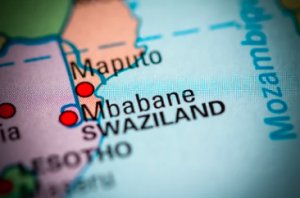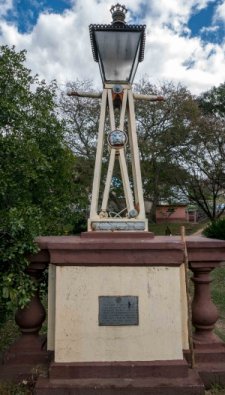|
The prevailing culture in Mbabane is deeply rooted in Swazi traditions, where respect for elders, the monarchy, and community solidarity are paramount. SiSwati and English are the official languages, with English being widely used in business, government, and education, making communication relatively easy for international visitors. Family values are central to daily life, and the extended family system remains strong, providing a crucial support network. Traditional rituals and ceremonies, though more prevalent in rural areas, are still observed and celebrated in the city, especially during national events like the Incwala (Kingship Ceremony) and Umhlanga (Reed Dance), which see many urban dwellers returning to their ancestral homes or participating in city-based celebrations.
As the administrative and commercial heart of Eswatini, Mbabane's economic profile is robust, driven primarily by the public sector, retail, finance, and increasingly, tourism. The city serves as the headquarters for numerous government ministries, departments, and parastatal organisations, making the public service a major employer and a significant contributor to the local economy. Salaried employment within these government entities provides a stable income for a large segment of the population, stimulating spending and supporting local businesses. The retail sector is another cornerstone of Mbabane’s economic activity. The city boasts modern shopping malls, such as Swazi Plaza and The Mall, which house a variety of local and international stores, supermarkets, and eateries. These commercial centres not only cater to the daily needs of residents but also attract shoppers from surrounding towns and rural areas, creating a bustling commercial environment. Alongside these formal establishments, vibrant informal markets thrive, offering fresh produce, traditional crafts, and a glimpse into local entrepreneurship. The financial sector also has a strong presence in Mbabane, with the central bank, commercial banks, and insurance companies operating their main offices here. This concentration of financial services underscores Mbabane's role as a key financial hub within the kingdom, facilitating investment and supporting business growth. While industrial activity within Mbabane itself is limited compared to cities like Manzini, the capital benefits from its proximity to key transport routes and serves as a logistical node for goods and services destined for other parts of the country. Tourism, a burgeoning sector nationally, contributes significantly to Mbabane's economic vitality. Hotels, guesthouses, restaurants, and tour operators cater to a growing number of visitors, creating jobs and stimulating local commerce. The city's scenic location and its role as a gateway to Eswatini's natural and cultural attractions further solidify its position as an economic driver, hinting at a future where diversified growth continues to strengthen its standing. |
Mbabane Profile |
Mbabane Profile |
Mbabane Profile | Mbabane Profile |
 |

|
Daily life in Mbabane offers a fascinating blend of urban convenience and a relatively relaxed pace, especially when compared to larger global metropolises. Mornings typically begin with a gentle awakening, as residents prepare for work or school. Public transport, primarily in the form of kombis (minibus taxis), is the most common mode of commuting, navigating the city's hilly terrain, while private vehicles also contribute to the morning rush. Despite the traffic at peak hours, congestion is generally manageable, allowing for relatively smooth transitions between home and workplace. Workdays are characterised by a steady hum of activity in offices, shops, and government buildings. Lunch breaks often involve a quick meal at a local eatery, a restaurant, or a traditional Swazi meal prepared at home. The city offers a diverse culinary scene, ranging from traditional Swazi dishes like sishwala (pap) served with meat and vegetables, to international cuisine found in various restaurants. Afternoons see a continuation of work, followed by the homeward commute. Mbabane and its immediate surroundings are replete with captivating tourist attractions that cater to a wide range of interests, from nature lovers and adventure seekers to those keen on cultural immersion. Dominating the skyline and providing a dramatic backdrop to the city is Sibebe Rock, the world's second-largest exposed granite monolith after Australia's Uluru. Hiking to the summit of Sibebe is a popular activity, offering challenging trails and rewarding panoramic views of the surrounding valleys and the city below. Its sheer scale and natural beauty make it a must-visit for any nature enthusiast. Within Mbabane itself, the bustling Mbabane Market offers an authentic slice of local life. Here, visitors can browse a vibrant array of fresh produce, traditional Swazi crafts, artworks, and textiles. It’s an ideal place to engage with local vendors, observe daily life, and pick up unique souvenirs. For shopping and dining in a more contemporary setting, Swazi Plaza and The Mall provide a modern retail experience with a selection of shops, cafes, and restaurants. The Mbabane Golf Club also offers a well-maintained course for golf enthusiasts amidst scenic surroundings. Beyond the city limits, but easily accessible for day trips, are some of Eswatini's most renowned tourist attractions. The Mlilwane Wildlife Sanctuary created in the 1950s, part of the larger Big Game Parks, is just a short drive away in the Ezulwini Valley on the old road to Manzini where antelopes, zebras, giraffes, warthogs as well as crocodiles and hippos can be found and enjoyed through self-guided walks, cycling, or horseback riding. Also in the Ezulwini Valley, the Mantenga Cultural Village provides an immersive experience into traditional Swazi culture. Visitors can witness traditional dances, explore a reconstructed Swazi homestead, and learn about the customs, beliefs, and history of the Swazi people. Nearby, the Mantenga Falls offer a beautiful natural spectacle. About 13 miles from Mbabane you'll find the royal village of Lobamba, Eswatini's traditional and legislative capital and the seat of Parliament. Just beyond this very traditional village with its beehive grass huts you will find the Swazi National Museum and the Embo State palace as well as the Somhlolo National Stadium. The entire Ezulwini Valley, often dubbed the "Valley of Heaven," is a hub for tourism, featuring hotels, craft markets, and other entertainment options that complement Mbabane's urban appeal. These diverse tourist attractions ensure that Mbabane serves not only as a functional capital but also as a compelling gateway to the rich experiences Eswatini has to offer. |
 Education plays a vital role in Mbabane's social progress, with numerous primary and secondary schools, alongside tertiary institutions like the Limkokwing University of Creative Technology, contributing to a skilled workforce. Healthcare facilities, including hospitals and private clinics, serve the city's population, striving to improve public health outcomes. Christianity is the dominant religion, with a multitude of churches representing various denominations, yet religious freedom is deeply enshrined, allowing for diverse spiritual practices. The social environment in Mbabane is generally welcoming and friendly, characterised by the inherent warmth and hospitality of the Swazi people, fostering a sense of community even amidst the bustle of urban life.
Education plays a vital role in Mbabane's social progress, with numerous primary and secondary schools, alongside tertiary institutions like the Limkokwing University of Creative Technology, contributing to a skilled workforce. Healthcare facilities, including hospitals and private clinics, serve the city's population, striving to improve public health outcomes. Christianity is the dominant religion, with a multitude of churches representing various denominations, yet religious freedom is deeply enshrined, allowing for diverse spiritual practices. The social environment in Mbabane is generally welcoming and friendly, characterised by the inherent warmth and hospitality of the Swazi people, fostering a sense of community even amidst the bustle of urban life.



 Evenings and weekends in Mbabane provide ample opportunities for leisure and socialising. Many residents enjoy spending time with family and friends, whether at home, in local parks, or at one of the city's shopping centres, which often host entertainment options. Sports, particularly football, are popular, and local matches draw enthusiastic crowds. The city also has a modest nightlife, with pubs and clubs offering options for evening entertainment. For those seeking cultural experiences, there are local markets to explore, often featuring artisan crafts and vibrant local produce. Despite being a capital city, Mbabane maintains a sense of community, and the general atmosphere is one of safety and camaraderie, making daily life here remarkably pleasant and engaging for its residents.
Evenings and weekends in Mbabane provide ample opportunities for leisure and socialising. Many residents enjoy spending time with family and friends, whether at home, in local parks, or at one of the city's shopping centres, which often host entertainment options. Sports, particularly football, are popular, and local matches draw enthusiastic crowds. The city also has a modest nightlife, with pubs and clubs offering options for evening entertainment. For those seeking cultural experiences, there are local markets to explore, often featuring artisan crafts and vibrant local produce. Despite being a capital city, Mbabane maintains a sense of community, and the general atmosphere is one of safety and camaraderie, making daily life here remarkably pleasant and engaging for its residents.


